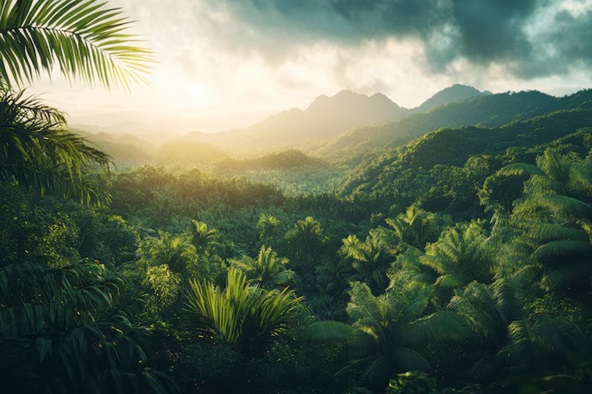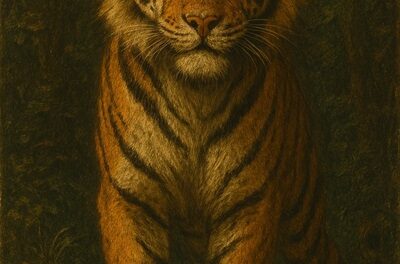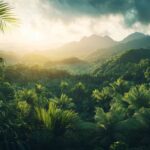The Great Rainforest: The Amazon
Deep within South America lies one of Earth’s most incredible natural wonders—the Amazon rainforest. Covering about 2.7 million square miles across nine countries, the Amazon is the largest tropical rainforest in the world. Brazil contains most of this magnificent forest, but it also extends into Peru, Colombia, Venezuela, Ecuador, Bolivia, Guyana, Suriname, and French Guiana.
The Amazon rainforest is often called the “Lungs of the Earth” because it produces about 20% of the world’s oxygen. Its countless trees absorb carbon dioxide and release oxygen through photosynthesis. This process helps clean our air and regulate the global climate.
What makes the Amazon truly special is its incredible biodiversity. Scientists estimate that one in ten known species on Earth lives in the Amazon! The forest is home to about 40,000 plant species, 2.5 million insect species, 2,200 fish species, 1,300 bird species, 430 mammal species, and hundreds of reptile and amphibian species. Many of these plants and animals cannot be found anywhere else in the world.
The Amazon River, which flows through the rainforest, is the second-longest river in the world after the Nile. During the rainy season, some parts of the forest flood, creating unique ecosystems where fish swim among treetops! The river itself contains amazing creatures like the pink river dolphin, electric eels, and piranhas.
Indigenous peoples have lived in harmony with the Amazon for thousands of years. Today, about 400 indigenous tribes call the rainforest home. They have developed deep knowledge about the forest’s plants and their medicinal properties. Many modern medicines were first discovered by these communities.
Scientists continue to make new discoveries in the Amazon. In fact, researchers find a new plant or animal species in the rainforest approximately every two days! Some of these discoveries might hold cures for diseases or provide other benefits to humanity.
Unfortunately, the Amazon faces serious threats. Large areas are being cut down for timber, farming, and mining. About 17% of the forest has been destroyed in the past 50 years. When trees are cut down, the homes of countless animals are destroyed. Deforestation also contributes to climate change by releasing stored carbon into the atmosphere.
Conservation efforts are underway to protect this precious ecosystem. Many countries have created national parks and reserves in the Amazon. Scientists, indigenous communities, and environmental organizations are working together to promote sustainable practices and preserve the rainforest for future generations.
The Amazon reminds us of the incredible diversity of life on our planet and why we must act as responsible stewards of the natural world. By protecting the Amazon, we protect ourselves and countless other species that call Earth home.

















